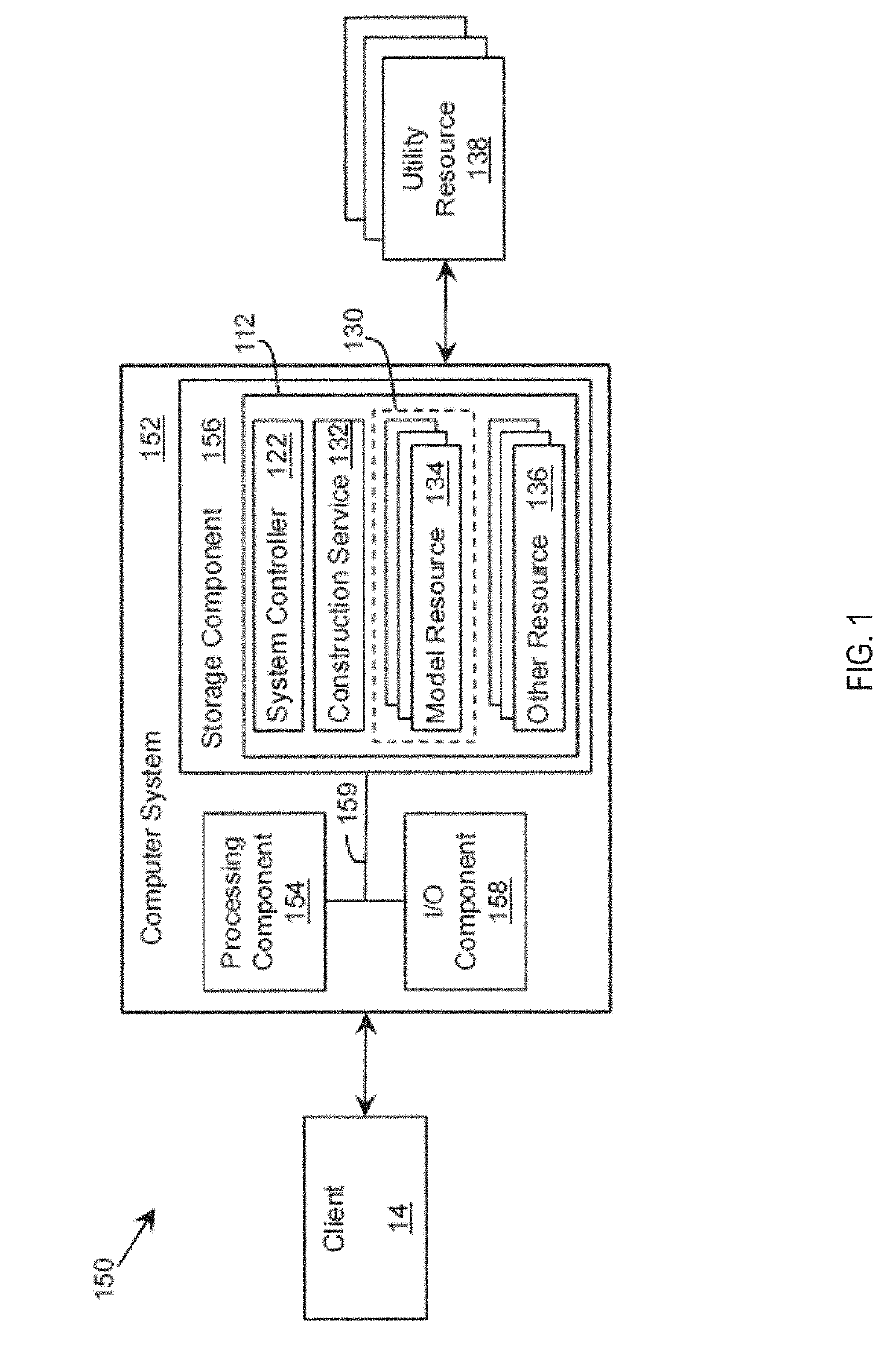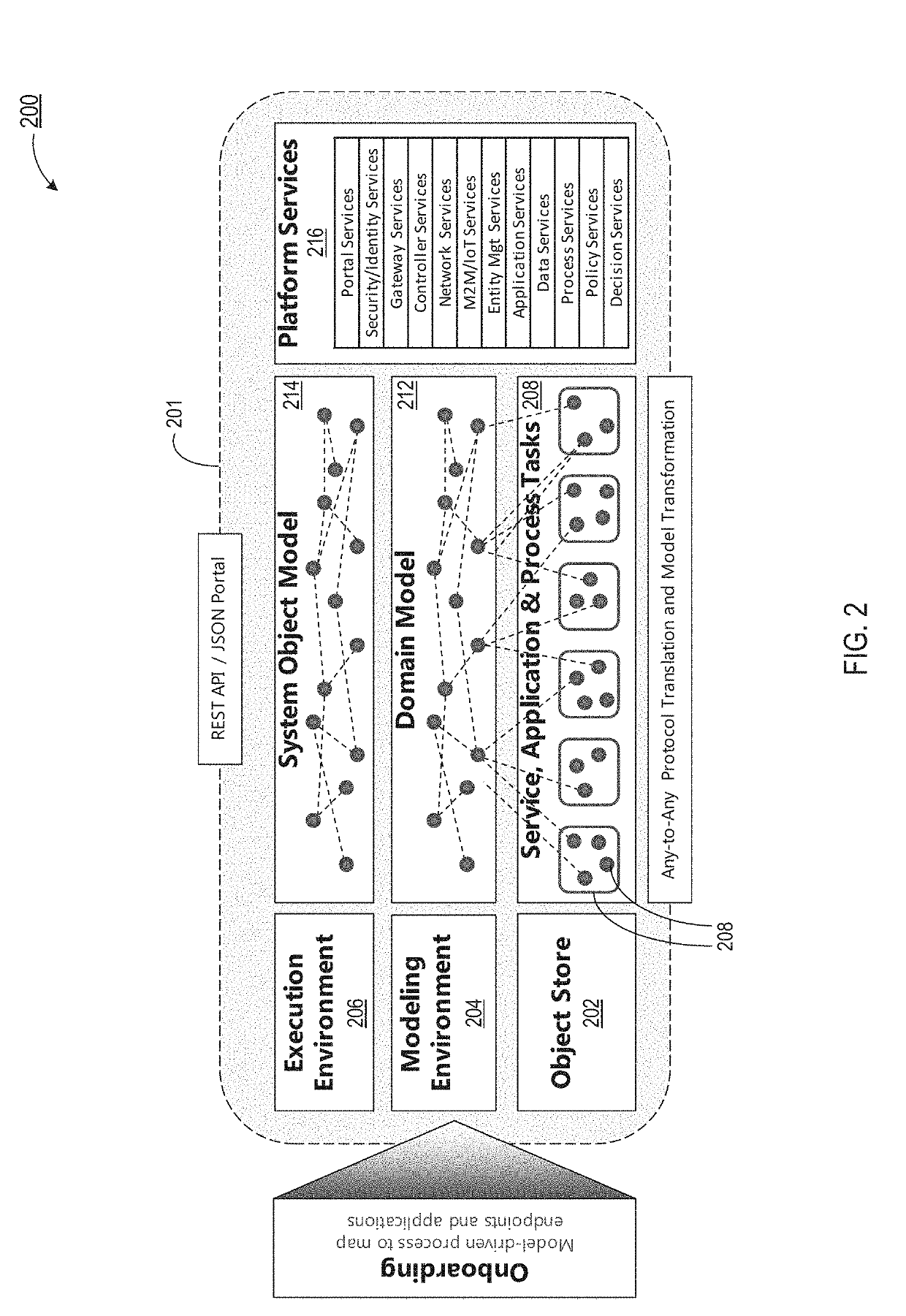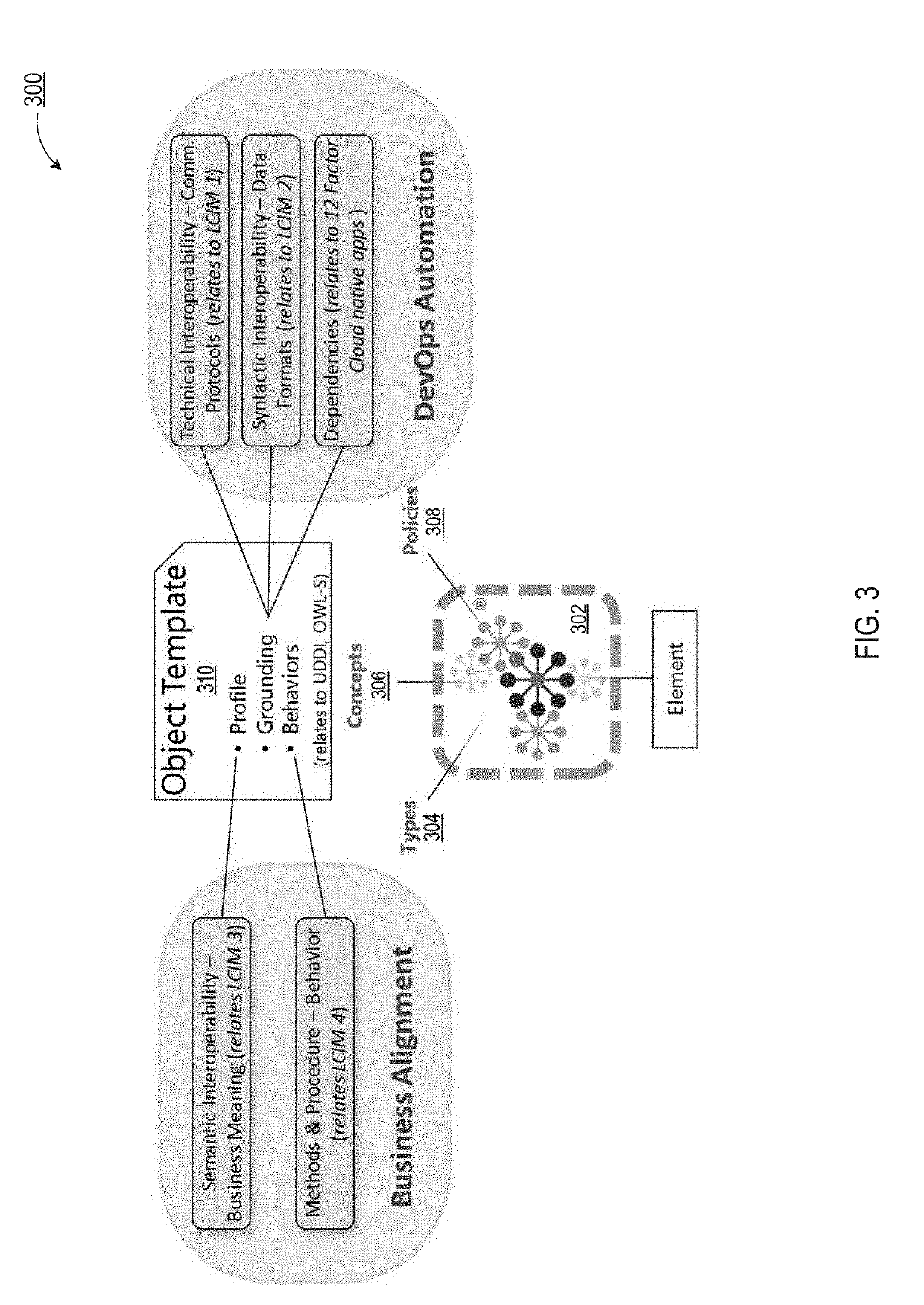Systems and methods for domain-driven design and execution of modular and dynamic services, applications and processes
a dynamic service and domain-driven technology, applied in the field of dynamic language for declarively modeling objects, can solve the problems of limiting the responsiveness of the process, prone to suboptimal outputs of individuals or systems working in isolation, and constraining the exploitation of contextually relevant resources
- Summary
- Abstract
- Description
- Claims
- Application Information
AI Technical Summary
Benefits of technology
Problems solved by technology
Method used
Image
Examples
Embodiment Construction
[0040]In various embodiments, a computing system platform (or, simply, “system” or “platform”) enables declarative modeling of complex distributed domains and the use of domain metadata and / or metrics to configure and / or control dynamic dataflow processes and / or real-time state to optimize dynamic dataflow processes. The domain model may provide shared concepts and types that represent an extensible set of semantically-related building blocks that may be shared across processes for integrated operations. In one example, the domain model performs like an application fabric or metadata backplane that may allow tasks to coordinate across business silos, layers of Information Technology, administrative domains, organizational boundaries and industry standards. The domain model may also connect across deployment models (e.g., server, virtual machine or container-based processes) and devices and machines (e.g., Internet-of-Things).
[0041]Dynamic languages are, by definition, interpreted, r...
PUM
 Login to View More
Login to View More Abstract
Description
Claims
Application Information
 Login to View More
Login to View More - R&D
- Intellectual Property
- Life Sciences
- Materials
- Tech Scout
- Unparalleled Data Quality
- Higher Quality Content
- 60% Fewer Hallucinations
Browse by: Latest US Patents, China's latest patents, Technical Efficacy Thesaurus, Application Domain, Technology Topic, Popular Technical Reports.
© 2025 PatSnap. All rights reserved.Legal|Privacy policy|Modern Slavery Act Transparency Statement|Sitemap|About US| Contact US: help@patsnap.com



